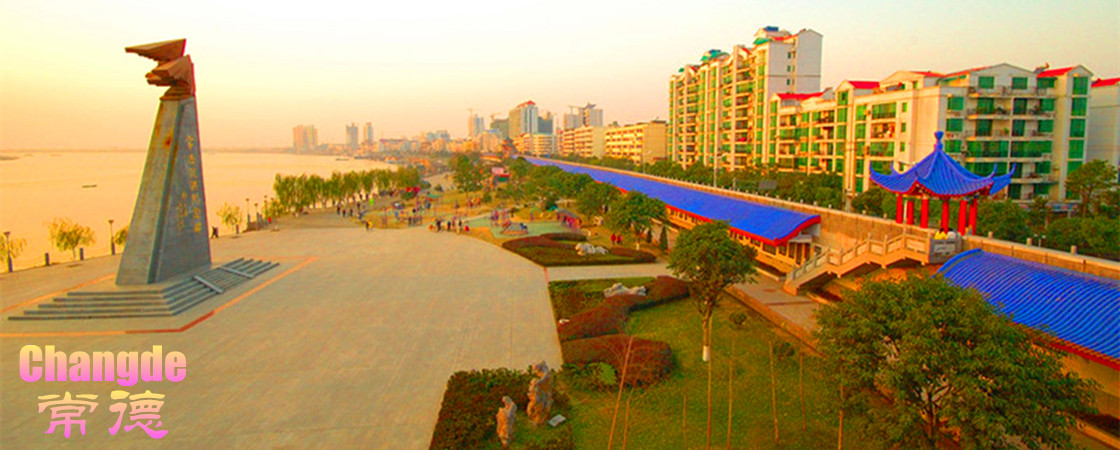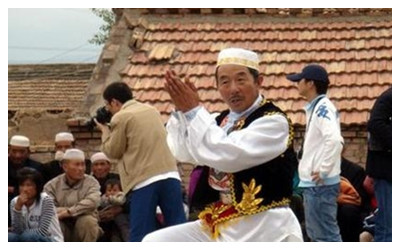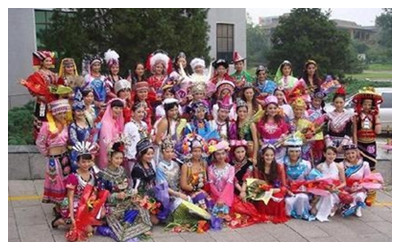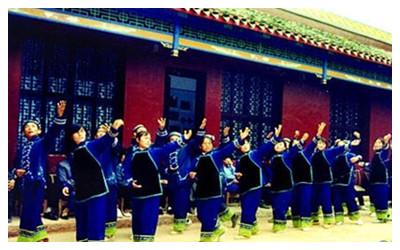Skype: neodalle-travel
Tel: +86 135 7447 2266
E-mail: sales@visitaroundchina.com

 Hui People in Changde
Hui People in Changde
There are now about 40,000 Hui people in Changde who mainly live in Taoyuan County, Wuling District, Dingcheng District, Hanshou County, Lixian County, Jinshi County and Anxiang County. Their ancestors were soldiers who were relocated to the above-mentioned areas under military order in the Ming Dynasty (1368-1644).
Hui people believe in Islam, so their main lifestyle is also Islamic. They have taboo against eating dogs, donkeys, horses, cats and other fierce animals, especially pigs. Hui people and Han people wear very similar clothing. The major difference is their distinctive headgear. Hui people traditionally wear a white skullcap and the women often wear a veil, keeping their faces covered. The primary traditional Hui festivals are Lesser Bairam (End of Ramadan), Corban and Shengji Festival.
Uyghur people in Changde
 There are about 6,000 Uyghur people in Changde who mainly in Taoyuan. Taoyuan Fengshu Hui & Uyghur Autonomous Town is known as the second largest Uyghur community in China, only next to Xinjiang Uyghur Autonomous Region.
There are about 6,000 Uyghur people in Changde who mainly in Taoyuan. Taoyuan Fengshu Hui & Uyghur Autonomous Town is known as the second largest Uyghur community in China, only next to Xinjiang Uyghur Autonomous Region.
Uyghur people had believed in Shamanism, Manicheam, Jing, Zoroastrianism, and Buddhism. Since the 11th century, they have gradually turned to Islam. This has strongly influenced their way of life and most festivals celebrated today relate to this religion. The grand festivals celebrated include the Corban Festival, Kaizhai Festival, and Almsgiving Festival. The staple food is Nang, noodles and Zhuafan. Nang is a kind of crisp baked pie, usually eaten with tea. Popular drinks include tea, milk tea and oil tea. Various fruits, mutton and beef are also typical favorites. They like to wear cotton clothes. Typically men wear gowns while women prefer to wear one-piece dresses. Many decorations such as ear rings, bracelets, and necklace and so on are women's favorite. Vibrantly colored and embroidered caps are an important component of their dress. They particularly enjoy dancing and singing. Festivities such as wedding ceremonies are celebrated with all guests, joining in their traditional folk dance. Poems and oral legends are always popular. The story of Afanti is a popular tale amongst Uygur children.
Tuijia People in Changde
 Tujia people are native to Changde. They used to reside in Shimen County about 2000 years ago. Their ancestors lived their life by planting and farming in jungles. Generations later, the population has now grown to 350,000.
Tujia people are native to Changde. They used to reside in Shimen County about 2000 years ago. Their ancestors lived their life by planting and farming in jungles. Generations later, the population has now grown to 350,000.
Tujia people have their own language which belongs to the Tibeto-Burman group of the Sino-Tibetan language family. At present the Tujia’s language is rarely used because it has no written script, so the language of the Han people is in common usage. Tujia people mainly eat rice and corn, and sometimes wheat and sweet potatoes. They especially favor sour and spicy flavors, and eat a lot of pickles. When guests come to visit during festivals, the host will serve Ciba (glutinous rice cake). Ciba is white, made of glutinous rice, with shape of a discus and size of a palm.
The Tujia costumes are colorful with over one hundred patterns. But Tujia people wear traditional clothes only during grand festivals. Tujia people like living in groups and their houses, known as Diaojiaolou, are very unique and functional. Tujia people believe in the power of ancestors and gods, and hold sacrificial ceremonies during festivals. Besides that Tujia people also have their unique White Tiger Worship.
The grandest festival of them is the Tujia Year which is called “Gannian” or “Diaonian Meeting”, and celebrated one day before the lunar New Year of the Han people.They also pay great attention to the Sheba Festival which is celebrated from the 3rd day till the 17th day of the first month on the Chinese calendar. ujia people are good at singing and dancing. Baishou dance (Hand dance) and Maogusi dance are very popular in Tujia people.
Famous people in Changde
Changde has been the hometown of many famous people. In recent history, the list of great people is long: Song Jiaoren, Jiang Yiwu, Lin Xiumei and Qiu Jin were the leading figures in the Xinhai Revolution (the 1911 Revolution). Huang Ai, Xiang Jingyu, and Wang Erzhuo were among the heroes and martyrs who sacrificed their lives for the People’s Republic of China
The older generation of proletarian revolutionaries like Lin Boqu, Su Yu, Teng Daiyuan, Shuai Mengqi, and Liao Hansheng all devoted themselves to the Communist cause.
Cultural figures like Ding Ling, the literary master, Jian Boza, the great historian, and Xin Shuzhi, the famous biologist were all raised in Changde.
 Ask Questions ?
Ask Questions ?